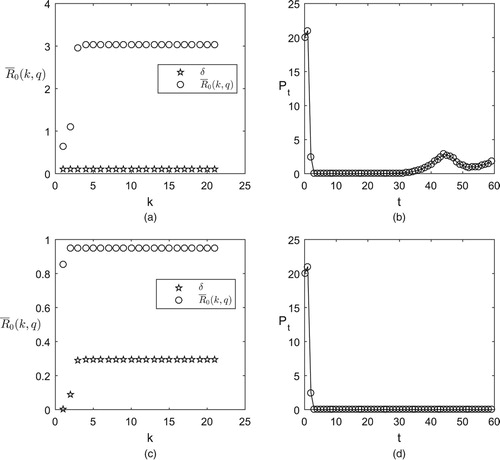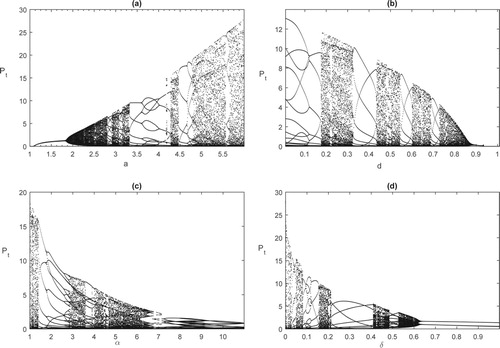Figures & data
Figure 1. The threshold values and numerical simulations of model (Equation4
(4)
(4) ) with constant pulse releasing of natural enemies. The baseline parameter values are as follows:
and
(a) The plot of
with respect to k and
; (b) The time series of the pest population associated with (a); (c) The plot of
with respect to k and the releasing constant δ determined by formula (Equation17
(17)
(17) ); (d) The time series of the pest population associated with (c).

Figure 2. Bifurcation diagrams for model (Equation4(4)
(4) ) with different bifurcation parameters
, and δ. The baseline parameter values are as follows:
. (a) Bifurcation diagram for the density of the pest population with bifurcation parameter a; (b) Bifurcation diagram for the density of the pest population with bifurcation parameter d; (c) Bifurcation diagram for the density of the pest population with bifurcation parameter α; (d) Bifurcation diagram for the density of the pest population with bifurcation parameter δ.

